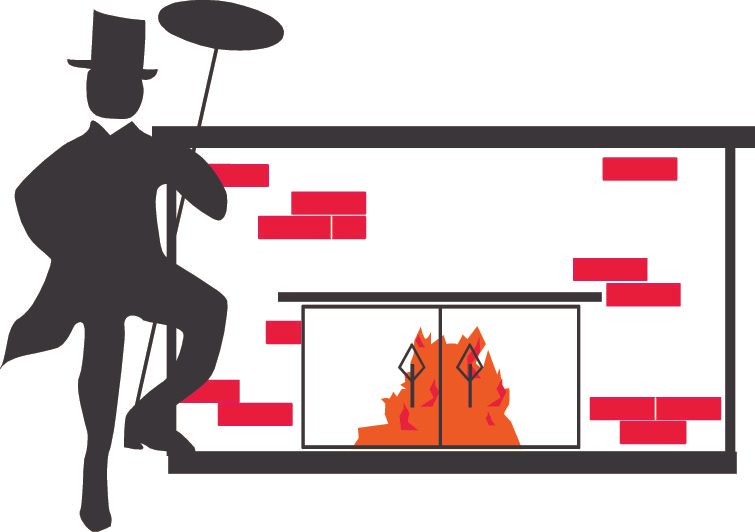When relining a chimney for a wood stove, the wood stove manufacturer normally states that the liner for the wood stove must be installed to meet the NFPA-211 standards or the IRC standards (whichever has jurisdiction). Most stainless steel liner manufactures require insulation around the liner in order to meet the NFPA-211, IRC code requirements, and UL-1777 listings.
There are some occasions when the clay flue tiles have to be removed in order to install a new lining system. This is not something we take lightly. Extra care must be taken when removing clay flue tiles so that the chimney structure itself is not damaged and any adjoining flues are not damaged as well.
When relining a chimney for a wood stove, we recommend using a 304-alloy stainless steel liner. We recommend either a heavy flex or a hybrid flex liner for wood stoves because they are made with a thicker grade of stainless steel and can be cleaned using a wire brush system. Wood stoves typically generate some amount of creosote build-up, which is best cleaned by a metal brush. Light flex liners, which use a thinner grade of stainless steel, can be used for wood stoves; however, they can only be cleaned by using a poly brush (using a metal brush in a light flex liner will potentially void the liner warranty and could possibly cause damage to the liner).
When relining for an oil appliance, we recommend using a 316-alloy light flex or hybrid flex stainless steel liner. The 316-alloy is a particular type of stainless steel that is manufactured to withstand the corrosiveness of the oil soot and any condensation that may occur in the pipe. With the newer higher efficiency units out on the market today, some of the furnace/boiler manufacturers require that the liners be insulated. However, insulating the liner for an oil furnace or boiler is currently not mandatory according to NFPA-211 or NFPA-31.
Relining for a gas appliance falls into four distinct categories. Each category has its own specifications for either lining or venting. Most of the home heating appliances for gas fall under Category One and require a 316-alloy stainless steel liner. When relining for a gas appliance, the recommendations of the gas appliance manufacturer and the NFPA 54 National Flue and Gas Code must be followed.
When relining for a fireplace, most of the time the clay flue tiles will need to be removed so that a stainless liner can be properly installed. It is very important to size a fireplace correctly so that it will draft properly. The liner must also be insulated in order to meet the liner manufacturer’s specifications as well as the NFPA 211 code. When the fireplace liner is installed, it is important to cement the liner end into the smoke chamber to ensure a smooth transition for the flue gases.
